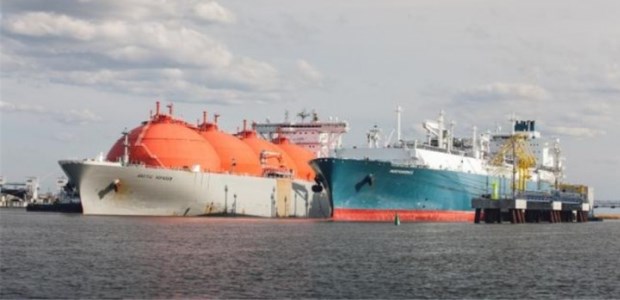
PHMSA, FERC to Sign Agreement on Permitting LNG Facilities
It will clarify each agency's role in the permitting process for potential LNG projects and implement procedures into FERC's authorization process that will leverage PHMSA's safety expertise to evaluate potential impacts on public safety.
Two federal agencies, the Pipeline and Hazardous Materials Safety Administration and the Federal Energy Regulatory Commission, have agreed to develop a Memorandum of Understanding that would refine and reduce the permit application review process for proposed Liquefied Natural Gas (LNG) facilities. It was announced by FERC Chairman Kevin McIntyre at a July 19 commission meeting at FERC headquarters; the signing of the MOU will be announced at a later date.
There are more than 110 LNG facilities operating in the United States, and a cluster of approved export terminals in southeast Texas and Louisiana are either under construction or not yet under construction, according to FERC. LNG facilities perform a variety of services. Some facilities export natural gas from the United Stats, some provide natural gas supply to the interstate pipeline system or local distribution companies, and others are used to store natural gas for periods of peak demand. Some facilities produce LNG for vehicle fuel or for industrial use. Depending on the location and use, an LNG facility may be regulated by several federal agencies and by state utility regulatory agencies.
"PHMSA is pleased to work with FERC to advance critical infrastructure projects that support our nation's growing energy dominance in the safest and most efficient way possible," said PHMSA Administrator Skip Elliott.
The MOU will clarify each agency's role in the permitting process for potential LNG projects and implement procedures into FERC's authorization process that will leverage PHMSA's safety expertise to evaluate potential impacts on public safety. FERC is responsible for authorizing the siting and construction of onshore and near-shore LNG import or export facilities under Section 3 of the Natural Gas Act. The commission, under Section 7 of the act, also issues certificates of public convenience and necessity for LNG facilities engaged in interstate natural gas transportation by pipeline. As required by the National Environmental Policy Act, the FERC prepares environmental assessments or impact statements for proposed LNG facilities under its jurisdiction.